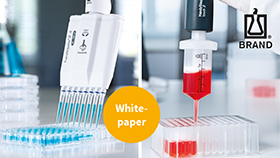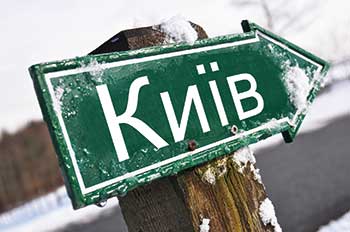Pryvit Ukrayiny
Career strategies for young European scientists
Ralf Schreck, Labtimes 04/2015
Page 1 | Page 2 | Page 3
Resistant to change
The NAS has been heavily criticised for preventing the advancement of science in the Ukraine. The wait-and-see attitude during the ongoing conflict with Russia and reports on embezzlement of research funds recently added fuel to the fire. No one is questioning that there are scientific accomplishments, even if international standards are applied. On the other side of the same coin, there are accusations over inefficient use of funds, amassment of significant property, dominance of over-aged NAS members hanging on to power and privileges, and being reluctant to change; lack of transparency, when it comes to member selections or decisions on funding and promotions, neglect of early-career researchers, insufficient ties to the university sector, lacking impulses for innovations leading to economic success or prevalent spirit of Russophilism. The NAS itself has recently published not only a 24-point list to comment issues raised by the media but also a 70-page concept for its development in the period 2014-2023.
The whole NAS system was dealt with and solutions as well as target indicators suggested, such as raising the level of programme-oriented and competitive funding from less than 30% to 50% or doubling the amount of funds per researcher and year to €12,850. Critics remarked that the paper and proposed changes are not far-reaching enough.
The spearhead of pro-reform scientists
The former President, Viktor Yushchenko, installed in 2005 a working group of experts from the NAS and leading universities with the task of developing a concept for the progress of science in the Ukraine. The group came up with a paper suggesting inter alia the establishment of a National Science Council, increasing the share of competitive research funds, the strengthening of research at universities and steps towards innovation activities and commercialisation in some areas of research. Unfortunately, the proposal did not receive the necessary full support by relevant players and was not implemented.
The Ukrainian Science Club (USC) was created shortly thereafter and provided a platform and voice for reform-minded scientists. Its vision was to put forward reforms enabling world class basic research, modelled after best international standards. The pre-eminent biophysicist and full NAS member, Oleg Krishtal, from the Bogomoletz Institute and biologist Nataliya Shulga were founding members. About 50 domestic and expat Ukrainian researchers, including stem cell researcher Ihor Lemischka from Mount Sinai Medical Center in New York, or neurophysiologist Alexei Verkhratsky from the University of Manchester, were engaged as USC members. Lobbying with the relevant governmental ministries, agencies and the NAS, even at the international level, has become a major USC activity. Earlier this year, Nataliya Shulga gave a presentation entitled “A Historic Chance to Revitalize Ukrainian Science” in the section on “Ukraine’s Scientific Future” at the Annual AAAS meeting in San Jose, USA.
Short lifecycle of first State Key Lab
USC also performs independent analysis of Ukraine’s scientific landscape by commercial tools, which have not been available or used in the past. A 2013 analysis revealed that only a fifth of the 200 full NAS members has an h-index of 10 and higher, meaning they have published throughout their life at least ten publications in journals of the Thomson Reuters journal list that have been cited ten times. Noteworthy, a quarter of full NAS members scored nil, meaning they never published an article in an international journal that qualifies for the Thomson list.
Among the lower-ranking corresponding NAS members, a similar picture emerged. A great success for the USC was the installation of the first “State Key Lab of Molecular and Cell Biology” in 2011, which was funded by the SFFR. The virtual key lab comprised researchers from the Institute of Physiology and the Institute of Molecular Biology and Genetics, both NAS institutions, and from an SFFR department. Joint projects were selected by an expert group headed by Nobel Laureate, Edwin Neher. Funding of projects was cut by 75% in the third year and suspended thereafter, with the excuse that regulations allow only temporary funding of projects.
Pushing research at universities
To push research at universities a ten-year national programme was installed. Significant changes to the Ukrainian Law on Higher Education were approved last year. It was the first law to be developed in public consultation and attracted about 6,000 submissions. The new law grants universities greater autonomy, decentralises decision-making processes, expands student self-governance and promotes transparency, e.g. with respect to the use of budget. A new admission system will be implemented, since voluntary donations have been urged for admission in the past. The number of higher education institutions has to be reduced and 500 institutions have already been downgraded to technical schools or colleges or even closed. About 50, mostly private universities with smaller student numbers, many of which have been accused of selling academic grades, are under close inspection.
The reduction of the teaching load by a third should allow more time for research, the PhD degree in accordance with international standards will be introduced and equal rights granted for foreign and domestic professors. New measures to counteract widespread plagiarism foresee degree revocations and temporary loss of rights to supervise or to award new degrees. It may be interesting to follow up, which of the legally binding reforms turn out as paper tigers.
In urgent need of foreign funds
Size and availability of Ukrainian research grants are usually small and leave little scope for consumables or equipment. Bi- or multilateral agreements with about 50 countries are in place and allow limited funding of joint research projects on priority topics. Most often, each country has to cover its own costs. Cooperation with Russia is currently put on hold, although it has been the most important long-time partner in some areas, including military research or nuclear energy. Access to additional resources such as the EU, international organisations and charities has become essential for keeping the scientific productivity alive.
The United States are a key partner and provide funding via the US Agency for International Development (USAID) or the Civilian Research and Development Foundation (CRDF). CRDF Global has made available more than €20 million for cooperative projects in the past. The US is also directing funds via the Science & Technology Centre in the Ukraine (STCU) or the NATO Science for Peace and Security Programme (SPSP). With €10 million for the period 2014-17, the Ukraine has even become the prime beneficiary of SPSP. Current projects cover a wide variety of topics, including novel materials for adsorption of radiological matter, metal nanocrystals for detection of biochemical agents and optical biosensors for the detection of bio-toxins. A prime example is also the long-term NESTOR project, in which a low-cost X-ray generator is developed at the NSC Kharkiv Institute of Physics and Technology.
Make science, not war
International cooperation is also the goal of the one-time funding programme Trilateral Partnerships by the German Volkswagen Foundation. Main objectives are to strengthen cross-border cooperation and networking between Ukrainian, Russian and German scientists and institutions. The programme is open to all disciplines and topics. Funds have been earmarked for up to three-year research projects totalling up to €250,000 and for meetings, including symposia or workshops. Some scientists questioned whether the announcement in early 2015 with an unresolved conflict was about the right time. Minister Serhiy Kvit issued a statement, in which he made clear that cooperations with Russia are impossible but may resume after the pre-conflict status has been restored. Ukrainian scientists were urged to boycott the programme. Efforts by the Volkswagen Foundation to lift the boycott call proved fruitless. Many Ukrainian researchers were unimpressed and more than 200 applications were submitted on time at the submission deadline, according to Matthias Nöllenburg from the Volkswagen Foundation.
Projects, such as BILAT-UKR*AINA funded by the past FP7 Framework Programme (2007-13), deal with the science and technology potential of Ukraine and aim at facilitating future scientific cooperation. Information platforms, such as S&T Gate UKR.EU or incrEAST, provide some details on the research landscape of the Ukraine, including searchable databases for funding opportunities or research institutions. In FP7 and previous programmes, Ukraine’s participation was strictly restricted to a few topics and measures. For example, about 300 scientists from the Ukraine took part in 200 FP7-funded projects totalling €24 million. As a surprise for many scientists, the Ukraine was promoted to an associated EU member country this March. Ukrainian scientists are from now on able to take full advantage of Horizon 2020 under the same conditions as any EU member state. Its admission ticket to Horizon 2020 was reduced by 95% and the first payment postponed.
Ukrainian institutions may serve as host institutions for top scientists funded by the European Research Council. Whether this will attract expats under the current conditions remains to be seen. Ukrainian researchers may apply immediately but grant agreements may be signed only after the Verkhovna Rada ratifies the agreement. Scientists based in the annexed Crimean Peninsula may not apply. It is expected that many excellent ideas that have been stored away in desk drawers, due to the lack of funding possibilities, will now find their way into EU applications with the prospect of securing significant resources.
Outlook
Becoming an associated country in Horizon 2020 was a major leap forward for the Ukraine. Now, it is time for the long-overdue overhaul of its research system. The Cabinet of Ministers appears to be avid for science reforms but new legislation and subsequent implementation are two sides of the same coin. Many reforms in the past were met with strong resistance and petered out. The economic crisis and the conflict with Russia may lead to political instability and consume significant resources impeding in-depth changes in the short term.
But it is not all about money. The Ukraine has to recognise first that education and science are essential cornerstones for its future economic and societal development. The new draft law “On amendments to the Law of Ukraine on Scientific and Technical activity” offers a full spectrum of new regulations. Main points are to create a National Council on Science and Technology as permanent advisory body under the Cabinet of Ministers, to increase the overall investments into research and development by the State budget from 0.7 (2011) to at least 1.7% of the gross domestic product, to install a well-endowed National Research Fund as source for competitive and merit-based funding and to establish a network of State Key Labs as Centres of Excellence for interdisciplinary research. The promotion of young talent, better protection of intellectual property rights and increased attraction for private funds are also addressed. Measures targeting the NAS involve a limitation of terms of office in key positions within the NAS Presidium, more participation of NAS scientists during elections and enhanced internal controls.
Hopefully, this time the conservative forces will not triumph.
Links
Page 1 | Page 2 | Page 3
Last Changed: 14.07.2015








